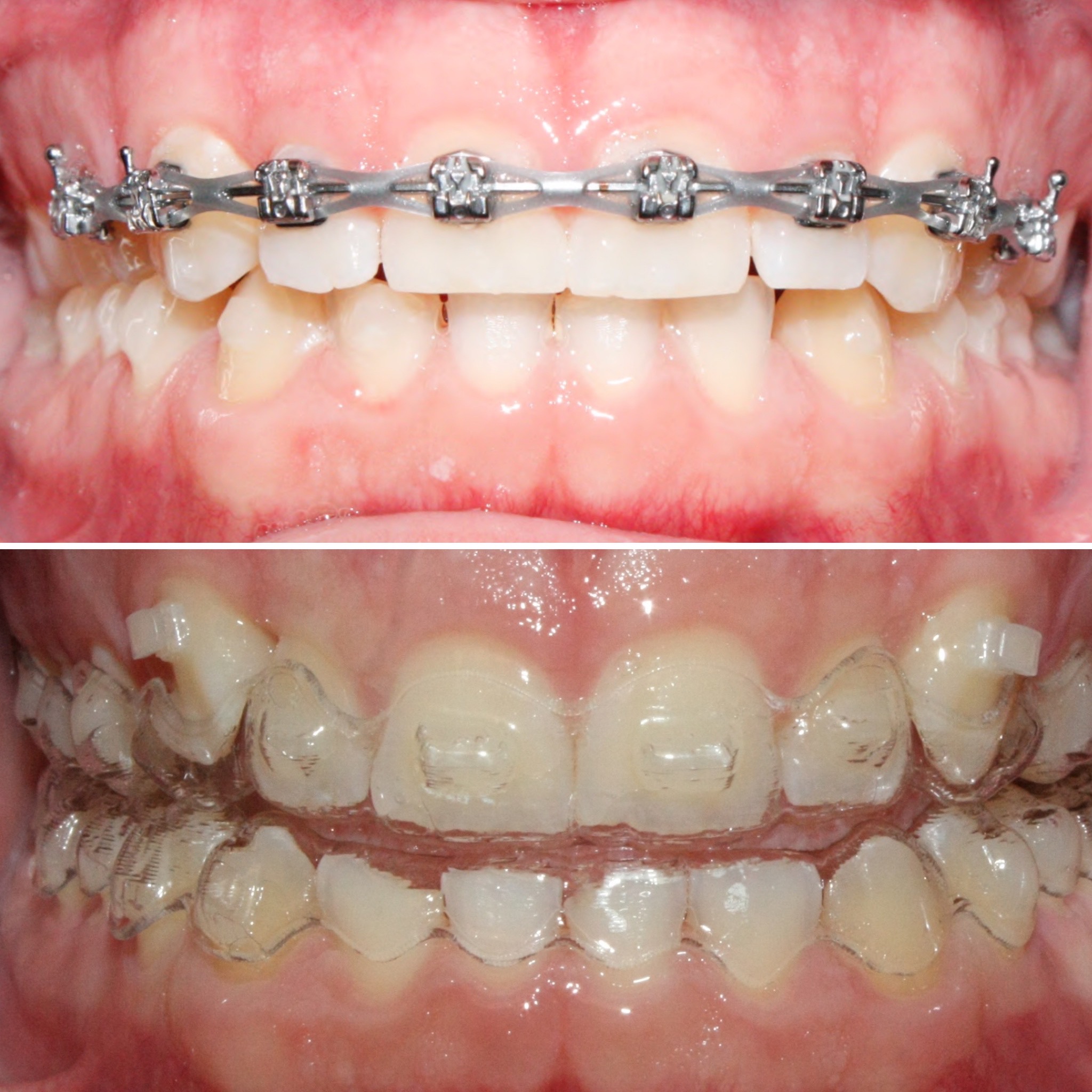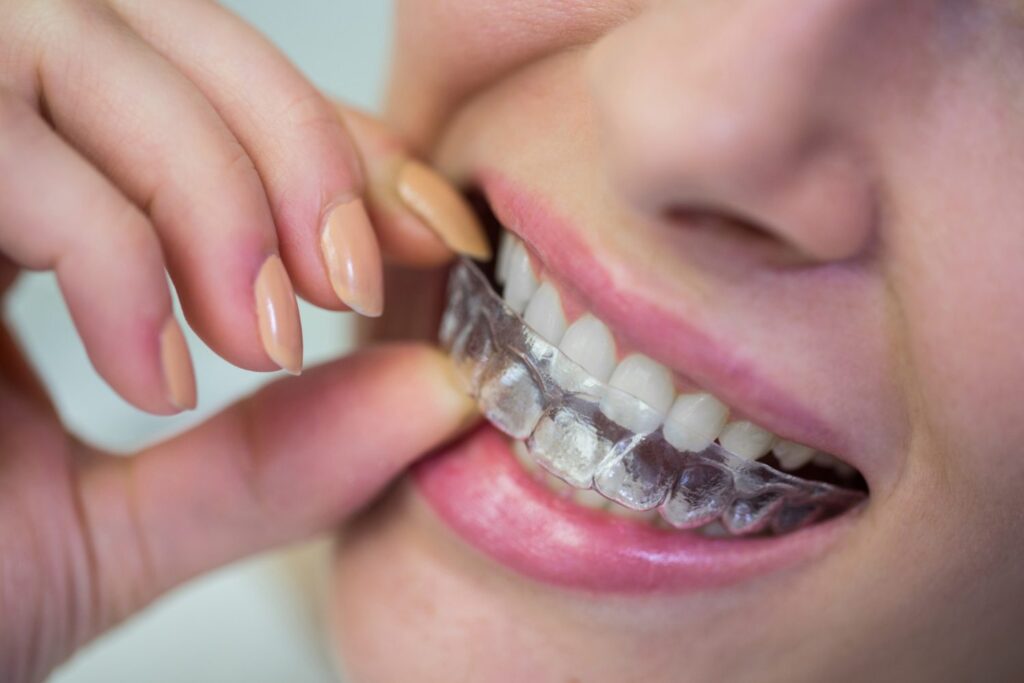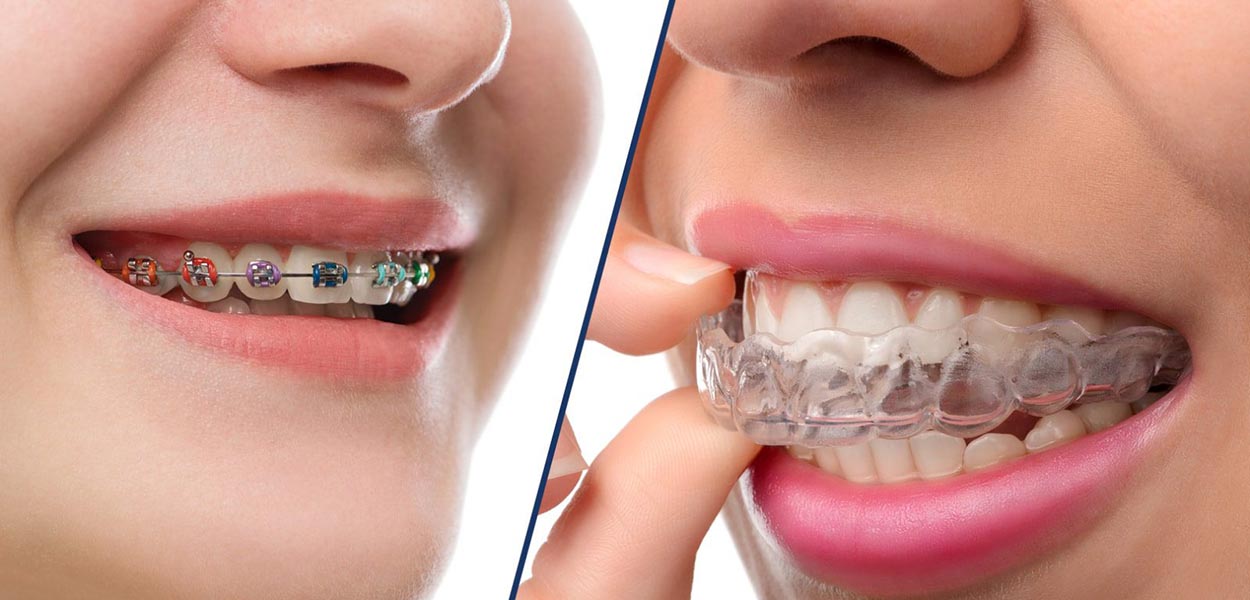Preserving Oral Health While Making Use Of Invisalign: Tips for a Smooth Experience
Invisalign vs. Typical Braces: Which Option Is Right for You?
When thinking about orthodontic therapy, the selection between Invisalign and conventional braces provides numerous vital factors that merit careful assessment. Invisalign uses a very discreet choice with detachable aligners, while typical braces provide a more visible yet efficient option for extreme imbalance. Each choice incorporates unique advantages and disadvantages associated to aesthetic appeals, comfort, treatment duration, and cost. Understanding these nuances is essential for making an informed decision that straightens with your individual choices and way of life. The concern stays: which option will best meet your orthodontic demands and assumptions?
Review of Therapy Options

On the other hand, conventional braces are composed of steel brackets and cables that are bound to the teeth. This technique uses continuous pressure with time to achieve positioning. While reliable for complex orthodontic issues, standard dental braces require routine brows through for adjustments and can present obstacles in maintaining oral health due to the problem of cleaning up about wires and brackets.
Both options have their advantages, and the selection usually hinges on specific dental conditions, way of life preferences, and individual conformity. Inevitably, consulting an orthodontic professional is essential for figuring out one of the most appropriate treatment plan tailored to individual needs. Comprehending the nuances of each option can considerably influence the overall success of orthodontic therapy.
Visual Factors To Consider
A substantial aspect influencing the selection between Invisalign and conventional dental braces is the aesthetic appeal each therapy provides. Invisalign aligners are crafted from clear plastic, making them virtually unnoticeable when used.
On the other hand, traditional dental braces are composed of metal braces and cables, which can be extra noticeable. While developments in orthodontic technology have brought about the development of smaller sized brackets and colored elastics, traditional dental braces still keep a more obvious profile. For some people, the visibility of braces might discourage them from looking for necessary therapy.
Inevitably, the option in between Invisalign and traditional braces might depend upon personal choices concerning visual appeals. People who prioritize discernment frequently favor Invisalign, while those that are less concerned regarding presence may opt for standard dental braces. Understanding the aesthetic ramifications of each alternative is crucial for making a notified choice that straightens with one's lifestyle and preferences.
Comfort and Convenience

In terms of convenience, Invisalign aligners are removable, making it possible for individuals to appreciate their favorite foods without restriction and keep ideal oral health. Cleaning and flossing are simplified, as the aligners can be gotten during these regimens, whereas conventional braces require cautious maneuvering around brackets and cables.
In comparison, traditional braces demand regular modifications, making them much less convenient for those with hectic timetables. In general, the convenience and convenience of Invisalign make it an attractive selection for many individuals looking for orthodontic therapy.
Treatment Duration and Performance
While both Invisalign and traditional braces are reliable in correcting dental imbalances, check my site the period of therapy can vary considerably in between the 2 options. Usually, Invisalign therapy can take anywhere from 12 to 18 months, relying on the complexity of the case. The clear aligners work by slowly shifting teeth into their preferred placements, and normal follow-ups with an orthodontist aid ensure progress stays on the right track.
In comparison, typical dental braces often require a longer commitment, usually ranging from 18 months to three years. This is due to their fixed nature and using cables and brackets, which can be much more efficient for complicated situations and serious misalignments (Invisalign). The treatment effectiveness of conventional braces is well-documented, as they allow for precise adjustments and greater control over tooth activity
Inevitably, the option between Invisalign and conventional braces may depend upon both the awaited therapy duration and the particular dental concerns available. Consulting with an orthodontist is important, as they can offer tailored recommendations based upon private requirements, guaranteeing the chosen approach lines up with preferred outcomes and durations.
Price Contrast and Insurance Coverage Options
Price plays a considerable role in the decision-making procedure for individuals considering orthodontic therapy, whether choosing Invisalign or standard braces. Usually, the cost of Invisalign arrays from $3,000 to i was reading this $8,000, while standard braces commonly cost between $2,000 and $6,000. Variables influencing these costs consist of the intricacy of the instance, the period of treatment, and geographical area.
Lots of oral insurance plans supply partial insurance coverage for orthodontic treatments, however the specifics can differ extensively. Normally, typical braces may be a lot more regularly covered by insurance coverage strategies contrasted to Invisalign, which some insurers categorize as a cosmetic procedure.
Furthermore, numerous orthodontic techniques offer flexible layaway plan, making both treatment choices a lot more obtainable. Patients ought to inquire regarding prospective financing choices and price cuts for ahead of time settlements. Evaluating the total cost, including insurance benefits and payment plans, is important for making a notified decision that lines up with both aesthetic preferences and budget considerations.

Final Thought
In summary, the choice between Invisalign and conventional braces depends upon numerous variables, including aesthetic choices, comfort, therapy period, and price. Invisalign provides a very discreet, removable alternative that promotes dental hygiene and nutritional versatility, while conventional braces might be better for complex dental concerns and commonly come at a lower rate point. Ultimately, consultation with an orthodontist is important to analyze private situations and determine one of the most proper treatment alternative for accomplishing optimal oral alignment.
When taking into consideration orthodontic therapy, the choice in between Invisalign and conventional dental braces provides several crucial elements that warrant cautious evaluation.Contrasting Invisalign and conventional dental braces reveals distinctive treatment alternatives for orthodontic adjustment.While both Invisalign and typical braces are reliable in remedying dental misalignments, go to website the period of treatment can differ significantly in between the two choices.Price plays a significant duty in the decision-making process for individuals considering orthodontic treatment, whether deciding for Invisalign or traditional dental braces.In recap, the choice in between Invisalign and traditional braces pivots on multiple elements, consisting of aesthetic choices, convenience, treatment duration, and price.